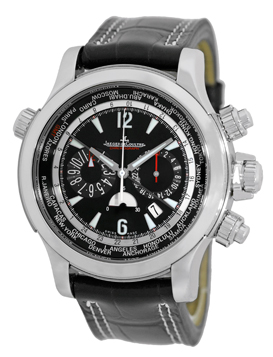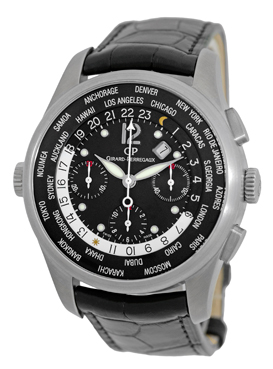The Most Useful Watch Complications
A watch complication is any function a watch does besides tell the time. Watchmakers pride themselves on their complications as the more complications a watch has, the more challenging it is to design and assemble; ultimately the number of complications is a testament to their ambition and skill as a craftsman. In 2015, Vacheron Constantin released a mechanical pocket watch that boasted a whopping 57 complications.
As you can imagine, there is an incredible range of watch complications: a 1,000-year calendar; a planetarium to read the planet’s relative positioning around the sun; the equation of time to read the true solar time (which is usually plus or minus 15 minutes of the “actual” time).
However, the majority of these are not helpful to or practical for the everyday watch-wearer; do you really need to know the moon phases? We break down the four most useful watch complications for day-to-day use.
1. An Alarm
Perhaps the most under-appreciated complication is the basic alarm. Granted most of us now defer to their iPhone as their alarm clock but having a wristwatch with an alarm is an elegant (or more friendly) reminder of, say, the parking meter that expires at 3PM. And, by setting an alarm that is not the same haunting tone as your morning wake-up call, you won’t get those panicked flashes that leave you wondering if your long work day was all just a dream…
2. The Date Display
Another beautifully simple watch complication: the date display. To quickly know the day’s number is remarkably handy in countless scenarios that usually flash through your mind as you’re commuting to work. Glancing down to know the number-date and calculating your rent is due on the 1st, payday is on the 15th, and your mother’s birthday is on the 30th is surprisingly helpful.
The most popular date display is referred to as a date window which is an aperture found by the three o’clock marker on the dial. Some brands like Rolex may have a magnifier over the number for greater legibility.
3. World Time
If you are traveling, are in a long-distance relationship, or your offices are headquartered overseas, a world timer or world timezone complication is incredibly useful. The rotating inner bezel with a 24-hour display sits inside an outer bezel that lists the major cities of each timezone. Your local time is read as usual while the inner bezel makes one complete revolution every 24-hours so you know the time in the London office with a quick glance of your wristwatch.
4. Power Reserve Indicator
The power reserve indicator of your watch is like the fuel gauge in your car: it tells you how much power is left. The power reserve indicator displays how many hours (or days for watches with a 10-day power reserve) remain until you need to wind your watch by measuring the tension of the watch’s mainspring. The mainspring is a coil of metal ribbon that slowly unwinds to power the watch.
Because your manual watch does not rely on a battery as an energy supply, it needs to be wound regularly in order to run properly. In an automatic watch, the movement is wound with your arm’s natural movement throughout the day. In a mechanical watch, the movement is wound by rotating the crown. For a step-by-step guide to winding your watch, check out our post How to Set Your Watch with more helpful expert tips.
















